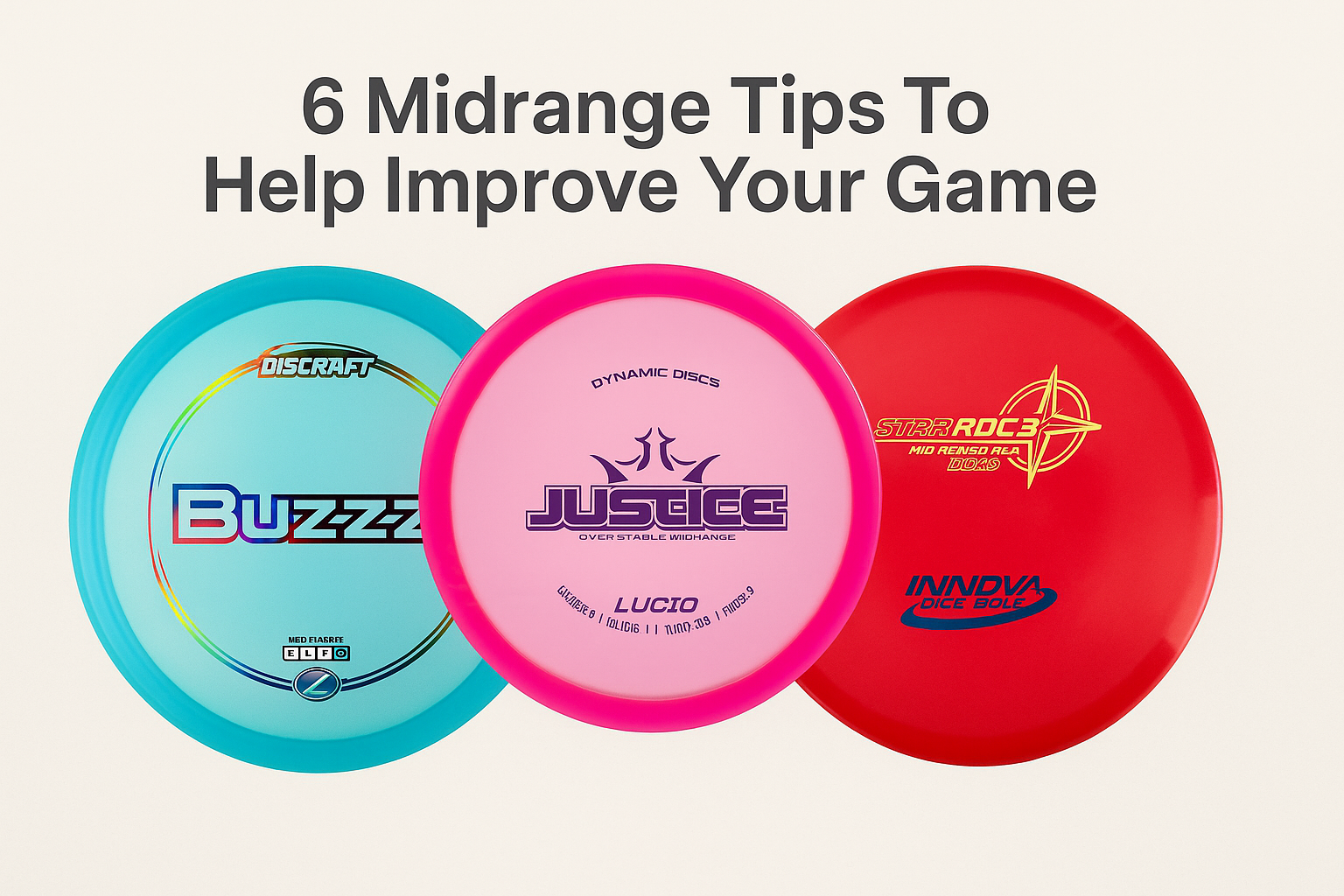
Midrange discs don’t always get the attention they deserve. A lot of players pack their bags with high-speed drivers and backups for their putters, but when it comes to mids, they often only carry one or two—and those rarely come out. That’s a missed opportunity.
Midranges offer a great blend of control, distance, and consistency. In my experience, learning how and when to throw your mids can shave real strokes off your scorecard. Whether you’re still building your form or already playing at a high level, this part of your bag deserves more attention.
Here are six practical tips to help you get more out of your midrange discs on the course.
1. Throw Midranges Off the Tee
If you’re not already using mids off the tee, it’s time to give it a try. Midrange discs are more accurate than drivers and can still offer solid distance on shorter holes or tight lines. On technical or wooded layouts, a clean midrange shot can set up an easy birdie while a driver might put you in trouble.
They’re also a great choice on holes with OB, water, or other hazards. You may give up a little distance, but you’ll gain better placement and avoid costly penalties.
Try reliable options like the MVP Tangent or the Innova Mako3 when you need both distance and control off the tee.
2. Trust Mids in the Woods
Wooded fairways reward precision, not power. This is where midranges really shine. Their slower speed and straighter flights make them ideal for carving tight lines and avoiding tree kicks.
If you’re facing a gap or a tunnel shot, a good mid can help you stay on target without needing to overpower the throw. Understable mids like the Latitude 64 Fuse are great for soft turnovers, while more stable options like the Discraft Buzzz handle straight shots with confidence.
3. Use Midranges for Upshots
When you’re 150 to 250 feet from the basket, a midrange is often the right choice. You can throw with less power and more accuracy than a driver, and you won’t need to muscle a putter to reach the target.
Choosing a midrange for your upshot helps you control the landing, avoid big skips, and dial in your distance more effectively. If you want to give yourself more looks at short putts, this is a habit worth building.
4. Midranges Are Ideal for Beginners
In my opinion, every new disc golfer should start with a midrange. A well-designed mid will teach you clean form, help you control nose angle and spin, and work for just about any shot outside the circle.
If you’re just starting out, go for an understable option like the Innova Panther or Latitude 64 Claymore. Throw them flat, focus on clean mechanics, and they’ll help you progress faster than jumping straight to drivers.
As you build power, you can add stable and overstable mids like the Axiom Hex or Innova Roc3. But don’t ditch the understable ones—they’ll still be useful for turnovers and finesse lines.
5. Yes, You Can Forehand Midranges
Don’t limit your forehand game to drivers. Many mids flick just fine—as long as you pick the right one. Look for low-profile mids that fit well in the hand and have a bit of overstability to handle the lower spin rate of forehand throws.
Something like the Discraft Zone OS or Dynamic Discs Justice can be reliable tools for forehand approaches or touch flicks through tight lanes.
If you haven’t tried flicking your mids, give it a shot. You might be surprised how consistent they can be.
6. Practice Your Midrange Game
Like any part of disc golf, mastering mids takes reps. I recommend taking a stack of your mids out to a field and practicing different angles—hyzer, flat, and anhyzer—at different power levels.
Use both backhand and forehand throws. Challenge yourself to hit specific landing zones, shape lines, and dial in touch. The more comfortable you are with these discs, the more confidence you’ll have on the course.
Need inspiration? Check out this fieldwork video from Jesús for some great drills and tips on how to structure your midrange practice.
Final Thoughts
If you’ve been overlooking your midrange discs, now’s the time to change that. Whether you’re teeing off on a short hole, threading the woods, or setting up your approach—midranges offer control, versatility, and scoring potential.
Add a few more to your rotation, take the time to practice with them, and start reaching for them with confidence. Your scorecard will thank you.
Looking to add a few to your bag? Browse our full selection of midrange discs here and find the perfect fit for your game.
